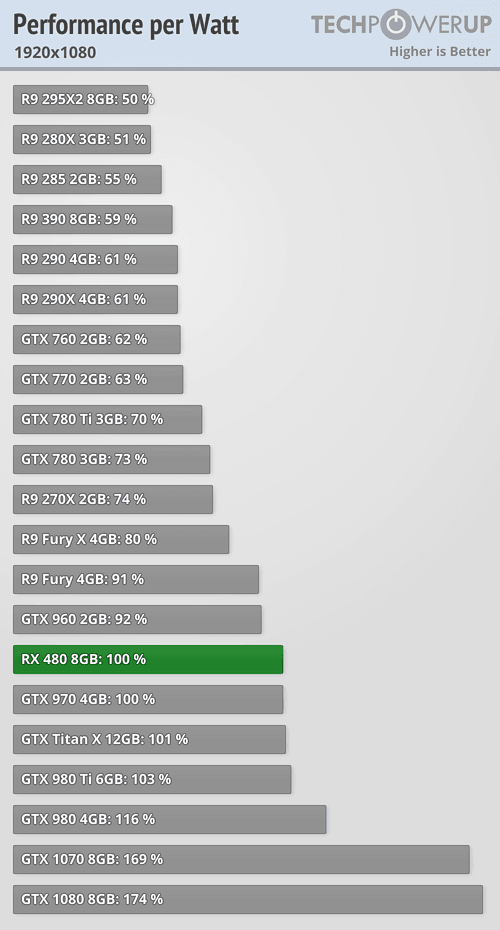Why is it the process's fault? Why is it never the fault of the company that actually designed the product?
Anyway, Polaris got a big jump in perf/watt over Tonga, no doubt process related. But AMD's architecture was so behind NVIDIA's to begin with that expecting to hit the perf/watt levels that NVIDIA did with Pascal on 16FF+ (which is a superior process, but not by THAT much) was just unrealistic wishful thinking.
I think, you're right on the money here. Polaris seems to be an evolutionary step in the GCN family. Given AMD's R&D situation, FinFET costs, and cost targets (mainstream markets), which seems to have driven them to a high volume die strategy both for GPUs and CPUs, it would be reasonable to expect them to also keep design costs for lower margin products in check. This means: improved GCN and not a completely reworked GCN (e.g. faster clockable pipeline -> lower FO4/stage) for Polaris.
So what AMD could get out of Polaris was limited from day one. With a smaller die than Nvidia's DT Pascal GPUs (to keep costs down), the only option to get more performance out of it is ... upping the clock frequency into the less efficient range.
Here is my view on this:
Well, problem is, there are a lot of games that are not DX12, and a lot of other cards in the line-up for both companies. Anyway, 1060 competes with 480, not 470, and indications are very strong that perf/watt will strongly favor 1060. Your scenario, is a cherry picked, best case scenario for AMD. Maybe we should examine all cards in each lineup, in a wide variety of games.
I didn't check, but if DX12 is easier to use, offers more performance, is in more widespread use (Win10 adoption thanks to the upgrade offer and XBox One, etc.), DX11 (where AMD's drivers lack anyway, regardless if it's a FinFET GPU or not) will fade away over time. This might also be an effect of game project schedules.
This is getting off topic in the cpu forums, but nobody argues that the 480 offers a lot of performance for the price. Again though, it was overhyped by AMD, and especially by some in these forums.
It clearly failed to meet the performance per watt that people expected, and is basically over-volted in order to reach acceptable frequencies, with rapidly increasing power use with minimal overclocking. AMD is covering their butts now by saying "Oh, we will get 2.8x performance per watt with Polaris, but not *this* polaris. Wait for the 470." So there is a lot of criticism, rightly so IMO.
I think the whole back and forth in opinions here and elsewhere is a to be expected result of people with a more or less complete picture of semiconductors discussing a complex topic with only part of needed information at hand.

E.g. some information that might have gone missing might be this one:
Many people seem to be so easily triggered, that they begin to run before knowing the direction...

This is true both for sceptics and "hypesters".







